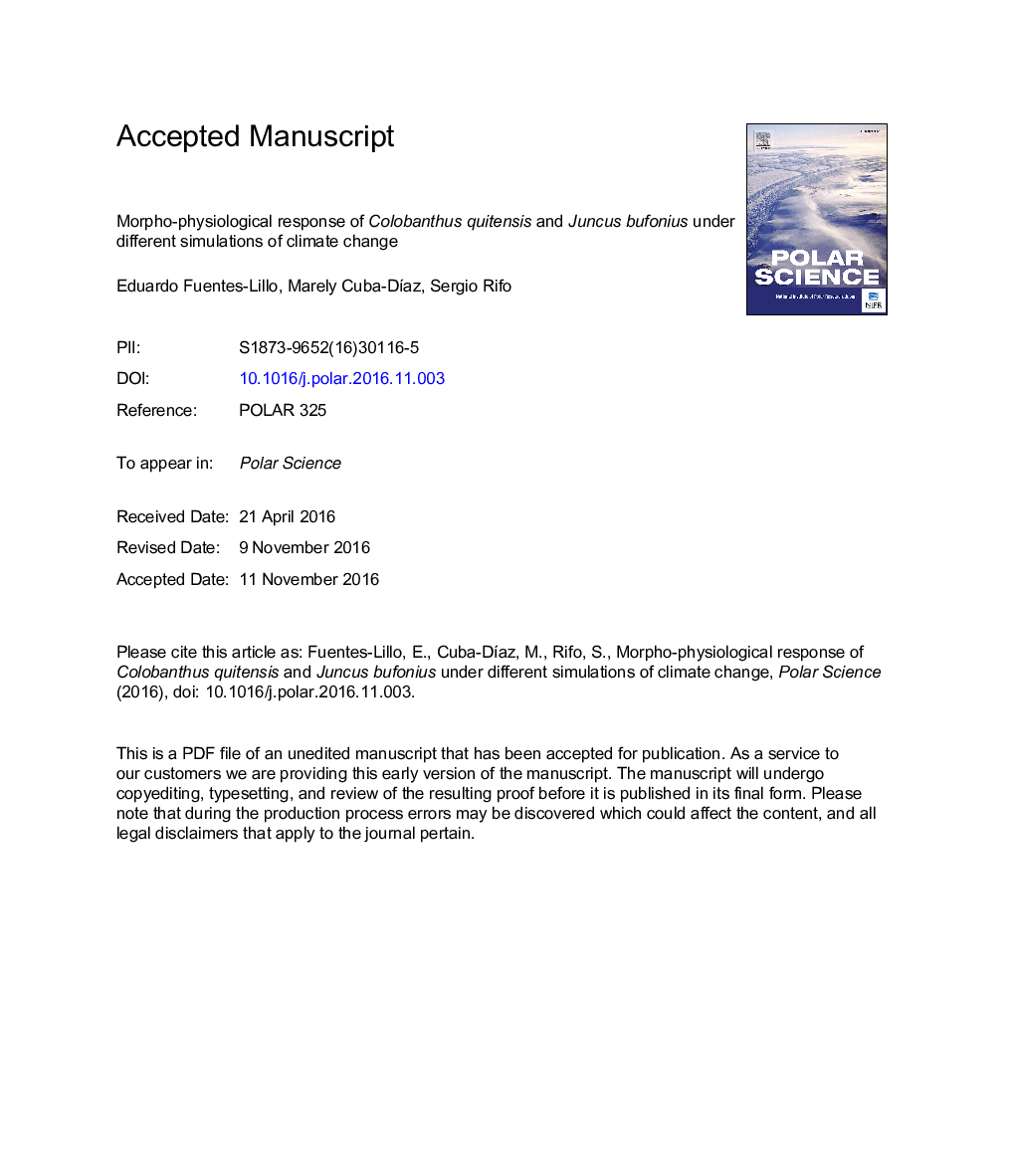| Article ID | Journal | Published Year | Pages | File Type |
|---|---|---|---|---|
| 5780549 | Polar Science | 2017 | 31 Pages |
Abstract
Global warming has caused an increase in ambient temperature in Antarctica, which has led to changes in water availability due to increases of precipitation and the melting of permafrost. This scenario of climate change is shown to improve growth conditions, as well as increase populations and local expansion of native and non-native species in the Maritime Antarctic. We hypothesize that the combined effect of the increase in temperature and water availability will enhance the eco-physiological performance in Colobanthus quitensis (Kunth) Bartl. and Juncus bufonius L., being more evident in the non-native species. To test this, a combined effect of temperatures and water availability (4°C H2O (field capacity), 4 °C + H2O (40% more than field capacity),15°C H2O, 15 °C + H2O, 20°C H2O and 20 °C + H2O) on morphological and physiological variables on both species were assessed. Temperatures and water availability increased significantly, which enhanced variables such as plant length, number of inflorescences, Fv/Fm and chlorophyll content for both species. When evaluating both species separately, we determined that the most crucial climate factor for the growth and development of C. quitensis was water availability, while the main determinate factor for the growth and development of J. bufonius was temperature. Also, through the simulated temperature rise and increased water availability, J. bufonius reached higher growth rates compared to C. quitensis.
Related Topics
Physical Sciences and Engineering
Earth and Planetary Sciences
Earth and Planetary Sciences (General)
Authors
Eduardo Fuentes-Lillo, Marely Cuba-DÃaz, Sergio Rifo,
